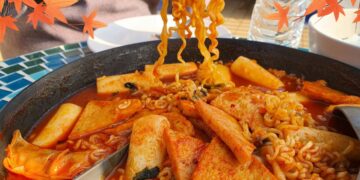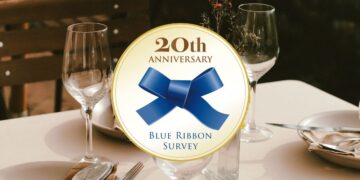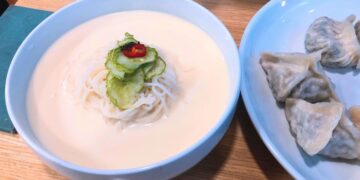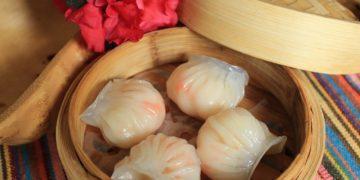Last Updated on 2 years by admin
Dumplings are loved all over the world for their delicious and unique flavor. People from different cultures enjoy dumplings because they bring joy. Let’s discover and learn about Korean dumpling, Mandu, a delightful and cherished dish and snack from Korea, and explore its different types.
Mandu: The Delightful Korean Dumplings that Steals Hearts and Palates!
Mandu: The Ubiquitous Food
People from different cultures and regions worldwide love dumplings. These delightful delicacies have different names in various countries, like Ravioli in Italy, Samosa and Gujiyas in India, Gyoza in Japan, and Mandu in Korea. Furthermore, there are diverse ways to prepare dumplings, including steaming, baking, pan-frying, deep-frying, or even making soup. Each cooking method offers a distinct and delicious taste experience.
Mandu, a delightful food and snack from Korea, stands out as an enchanting delight in Korean cuisine. It also plays a significant role in Korean traditions, especially during the Lunar New Year celebration. During the Lunar New Year, families gather to make and eat homemade Mandu, symbolizing abundance and good fortune like “lucky pouches.”
Moreover, a thin dough carefully wraps a delicious combination of minced meat and fresh vegetables, resulting in a delightful dumpling that brings true enjoyment. This combination enhances the flavor and offers a healthy option for those who indulge in these treats.
Koreans love this dish because it is easy and quick to prepare, making it a convenient snack. Additionally, people can enjoy it as an appetizer or even as a light meal.
Let’s now delve into the various kinds of Korean dumplings known as Mandu.
Types of Korean Dumplings
1. Kimchi Mandu

Kimchi, a popular Korean staple, complements a variety of dishes. One tasty example of kimchi creation is kimchi mandu. These dumplings are filled with fermented kimchi and a mixture of tofu, ground beef or pork, bean sprouts, onions, and scallions. This blend of ingredients creates a distinctive and savory flavor. If you’re a fan of kimchi, you must try these dumplings.
2. Saeu Mandu

If you’re a seafood fan, you should try Saeu Mandu, a delicious Korean snack made with shrimp. These Korean dumplings are filled with chopped shrimp and various nutritious vegetables, making them easy to prepare and bursting with juicy, flavorful goodness. They’re even better when enjoyed with a dipping sauce made with soy sauce, vinegar, hot pepper flakes, and sesame seeds.
3. Hobak Mandu
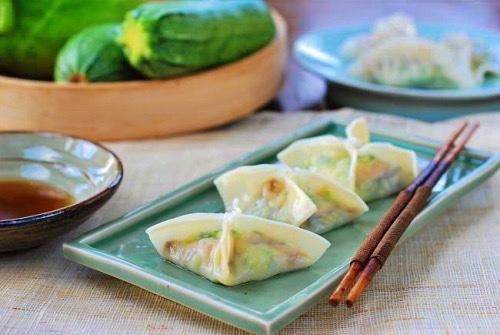
Hobak Mandu, or zucchini dumplings, is a delightful and tasty vegetarian snack from Korea. Its filling is made from zucchini, tofu, mushrooms, and various vegetables, creating a delicious plant-based alternative. Unlike traditional dumplings, these traditional snacks from Korea omits garlic and green onions from the recipe. As a result, it has gained popularity as a favored Korean temple cuisine due to its light and flavorful qualities. It’s an excellent choice for individuals seeking meatless alternatives, particularly during summer.
4. Tteok Mandu Guk
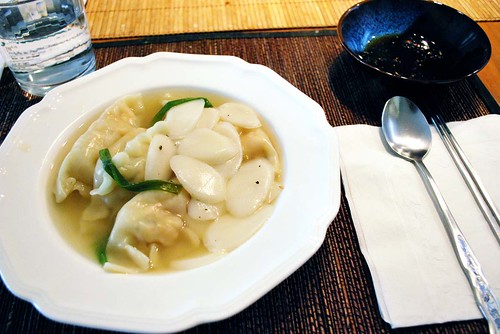
Tteok Mandu Guk is a delicious Korean soup that combines tteok and mandu. While people can enjoy this comforting Korean food throughout the year, this special rice cake soup holds significance during the Lunar New Year. The white soup represents a fresh start, and the disc-shaped rice cakes resemble coins, symbolizing a wish for prosperity for those who partake in it.
5. Songpyeon Mandu

Songpyeon rice cakes, traditional Korean snacks in a charming half-moon shape, are renowned for their unique pine flavor. These delicacies are an essential part of South Korean cultural heritage. Koreans use rice flour to create the shell of these rice dumplings, filling them with various ingredients ranging from sesame powder to mung bean, creamy red bean, or chestnut paste. Songpyeon rice cakes are carefully steamed on a bed of pine needles to enrich the taste and prevent sticking. During Chuseok, these delightful rice cakes hold profound meaning as symbols of good fortune and abundance.
Are you ready to indulge in the mouthwatering flavors of Mandu and embrace the cultural richness it brings to the table?
From picturesque landscapes to hidden gems and cultural adventures, follow KoreaTravelPost’s Twitter, Facebook, Instagram, LinkedIn, and Flipboard for a thrilling journey through the heart of Korea.
Related Posts
5,928 total views, 3 views today


